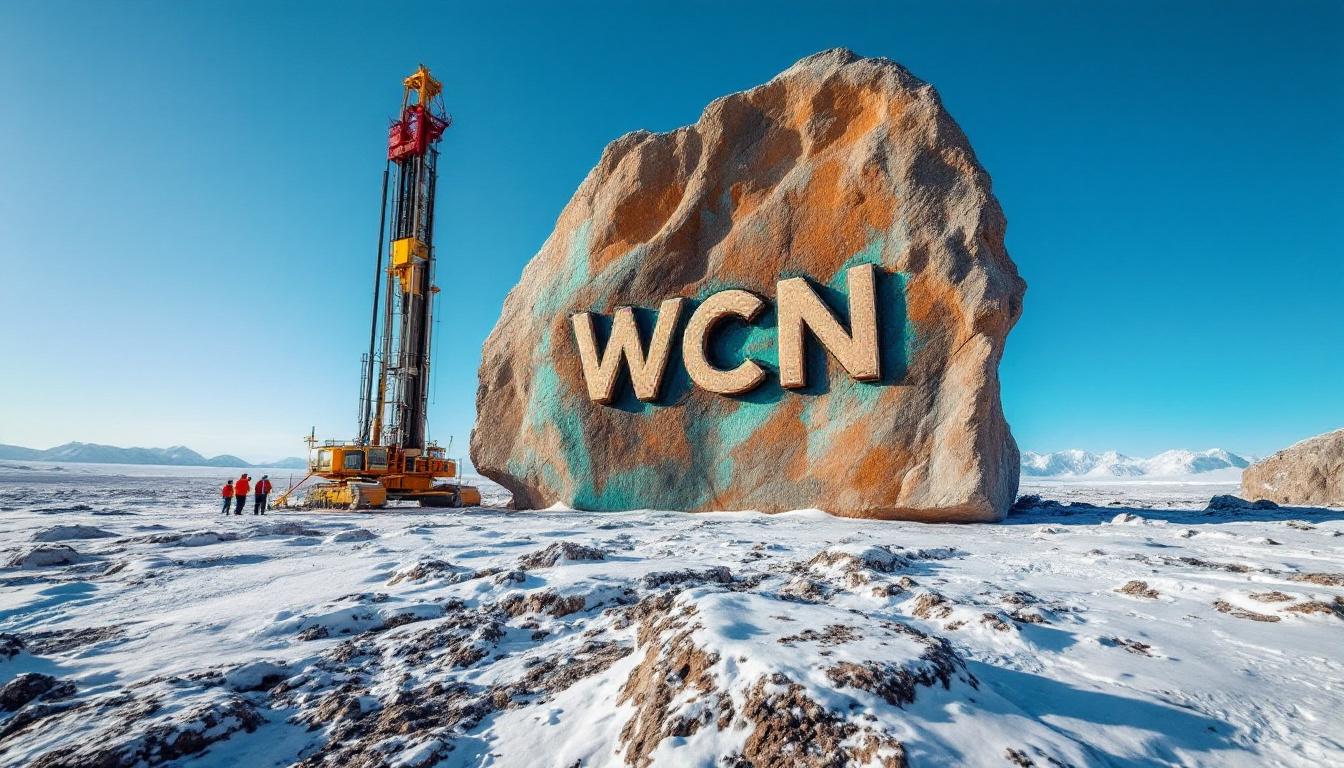Major Breakthrough: First Phase Drilling Delivers Exceptional Results
Litchfield Minerals unveils drilling results with a 100% success rate with all six reverse circulation (RC) drill holes intersecting visual sulphide mineralisation over significant intervals ranging from 20 to 150 metres downhole. The holes, spaced approximately 150 metres apart, have effectively tested a portion of what the company believes could be a 3-kilometre long mineralised corridor.
In a particularly significant development, this programme represents the first-ever drilling on the eastern side of the Oonagalabi system, where abundant disseminated sulphide mineralisation was intersected. This successful step-out drilling substantially expands the known mineralised envelope.
Matthew Pustahya, Managing Director and CEO of Litchfield Minerals, emphasised the significance of the findings: "This is an excellent outcome for our first drilling programme at Oonagalabi. Intersecting sulphide mineralisation in all six holes is a strong technical validation of our targeting methods and highlights the scale of the system."
Confirming a Rich Polymetallic System
The drilling has confirmed the polymetallic nature of the Oonagalabi deposit, with sulphide assemblages including:
- Chalcopyrite (copper)
- Sphalerite (zinc)
- Galena (lead)
- Pyrrhotite and pyrite
In-field XRF data further indicated elevated cobalt and bismuth levels within a magnetically-responsive zone, suggesting the system may have experienced multiple mineralising events – a characteristic often associated with larger mineral systems.
Visual mineralisation estimates appear consistent with historical drilling results, though laboratory assays (expected within 6 weeks) will provide confirmation of actual grades. For context, historic drilling in the area reported average intercepts of 13.1m @ 0.44% Cu, 0.96% Zn.
Understanding Induced Polarization (IP) Surveys: A Key to Successful Exploration
One of the technical highlights of this programme was the validation of Induced Polarization (IP) surveys as an effective targeting tool at Oonagalabi.
IP surveys work by measuring the chargeability of the ground, which is elevated when disseminated sulphide minerals are present. The technique involves sending electrical current into the ground through electrodes and measuring how the ground stores and releases this energy – a property particularly enhanced by sulphide minerals.
For investors, the successful application of IP at Oonagalabi is significant because it:
- Confirms the company's geophysical model is valid
- Provides a cost-effective tool for future targeting
- Increases confidence in upcoming exploration phases
- Suggests other similar anomalies in the area may also represent mineralisation
This technical validation significantly de-risks future exploration, as the company now has a proven method for targeting additional mineralised zones.
Future Exploration Plans: Hunting for High-Grade Feeder Zones
With the widespread nature of mineralisation now established, Litchfield is shifting focus to locate potential high-grade "feeder" structures within the broader system. These feeder zones typically represent the pathways through which metal-rich fluids flowed, often resulting in higher-grade mineralisation.
Upcoming exploration activities will include:
- Airborne electromagnetic surveys (VTEM)
- Ground gravity surveys
- Phase Two drilling programme
These techniques are specifically designed to target potential semi-massive to massive sulphide zones that could represent higher-grade portions of the system. As CEO Pustahya noted, "The next phase of work will focus on uncovering the potential high-grade feeder structures that could be the key to unlocking value at Oonagalabi."
Investment Perspective: Why Litchfield's Discovery Matters
Litchfield Minerals unveils drilling results that represent a compelling investment opportunity for several reasons:
-
Scale Potential: The mineralisation encountered spans substantial widths (up to 150m) and potentially extends across a 3km corridor.
-
Polymetallic Nature: With copper, zinc, lead, and potentially cobalt and bismuth, the project offers exposure to multiple commodities, including critical minerals essential for the energy transition.
-
Exploration Upside: Having only tested a portion of the target area, with both the eastern and western extensions open, significant room remains for resource growth.
-
Technical Validation: The 100% drilling success rate validates the company's geological model and exploration approach.
-
Strategic Location: Located in the Northern Territory, the project benefits from established mining infrastructure and supportive jurisdiction.
Why Investors Should Keep a Close Eye on Litchfield
Litchfield Minerals presents an attractive opportunity for investors interested in early-stage exploration success with significant upside potential. The company has demonstrated both technical competence and strategic vision in its approach to Oonagalabi.
With a 100% hit rate on its first drilling programme and evidence of a large-scale mineral system, Litchfield has established a solid foundation for future exploration success. The upcoming assay results and Phase Two exploration programmes represent significant near-term catalysts that could further enhance the project's value proposition.
For investors seeking exposure to critical minerals in a tier-one jurisdiction, Litchfield offers a compelling combination of technical validation, exploration momentum, and significant discovery potential at what may prove to be the early stages of defining a major new polymetallic system in Australia's Northern Territory.
Ready to Invest in the Next Major Australian Copper Discovery?
Litchfield Minerals' exceptional first-phase drilling results at Oonagalabi, delivering a 100% success rate with significant mineralisation intervals, could represent the early stages of a major polymetallic discovery. With confirmed copper, zinc, lead and potential cobalt mineralisation across a possible 3-kilometre corridor, now is the time to consider the investment potential. For comprehensive information about Litchfield Minerals and their promising Oonagalabi project, visit www.litchfieldminerals.com.au to stay ahead of the market.




